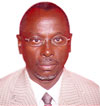History repeats itself, so the common saying goes. It does not actually change, some would say. They could even add that truth gets lost in the recounting of events, current or past. All these are correct – certainly in the case of Rwanda and Africa generally.


History repeats itself, so the common saying goes. It does not actually change, some would say. They could even add that truth gets lost in the recounting of events, current or past. All these are correct – certainly in the case of Rwanda and Africa generally.
For long Africa has been seen through the eyes of foreigners – first, explorers (adventurers to give them their correct name), then missionaries, colonial officials, scholars (especially historians and anthropologists) and writers. They came carrying a cultural and intellectual baggage that helped shape the image of Africa.
The image of the continent that was formed and still endures came from travel notes, chance encounters, inaccurate translations, misrepresentations by mutual enemies and denunciations by zealous converts and collaborators. In many cases sources of information were guides and porters themselves ignorant of the area and people among whom they passed. Or they were sworn enemies.
And so from the unlikeliest collection –a scattering of impressions, hearsay acquired along the way and a smattering of hastily formed opinions on some aspects of Africans – the image makers weaved a narrative that was passed to posterity as the truth.
Today that skewed image is still being formed and passed as the authentic thing. The players may have changed, but not their methods.
The new image makers are legion. They include journalists, aid workers and other NGO staff, diplomats, and activist academics and human rights advocates. Anecdotes picked on a three-day tour form the defining image of a leader or a whole people. A few articles establish one as an authority on the region. The amount of venom one pours on a country and its leaders becomes a necessary qualification for membership of the club of image crafters.
And so a Geoffrey Gettleman who hardly sets foot in Rwanda but writes on the country becomes an authority on account of some sensational and negative articles he publishes in The New York Times. By some strange logic the more negative you are the more credibility you have.
Others sit in London and pen "authoritative” opinions about Rwanda in The Guardian and other British papers.
Mr Stephen Kinzer flip flops in his view of the country because he cannot bear the attacks from the crowd that has arrogated to itself image making rights. And his "correct” version of Rwanda’s history and current events written to appease the screaming crowd of Rwanda bashers must be the one that splashes mud on the country’s leadership. All his earlier researched and carefully reasoned assessments of the country count for nought.
The venomous Ann Garrison builds her fame (notoriety) on her ability to outdo the cobra in all aspects.
Pseudo –intellectuals – like the social anthropologists before them – attempt to earn academic honours by writing and publishing their biases on Africa. The Don Quixote type among them, like Christopher Black, Peter Erlinder and like-minded activist academics chase after a mirage of American imperialist conspiracy in Rwanda. They end up distorting our history.
The new image is deliberately flawed in much the same way as the earlier one was. The sources of information for the image makers are the usual suspects. For instance, journalists and diplomats will seek out individuals they perceive to be opposed to the state for whatever reason and take their views as correct. Often they will construct a tribal or ethnic basis of power, complete with inner circles, confidants of the president and a long list of the disaffected that they rush to for the "correct” information.
It matters little that the sources are insane, criminals or habitual liars. It only matters that they are willing to say the most damaging thing about their country (treason, surely).
It comes as no surprise that Gerald Gahima, with a trail of crimes behind him across several continents, becomes the credible spokesman of a political organisation supposedly intent on liberating the long-suffering Rwandans from their misery. His record of abuse of office is conveniently forgotten. He is the born-again democrat. Incidentally at some point, before power went to his head and an irresistible desire for material wealth took hold on him, Gahima was a born-again Christian.
It is not strange, except to the naive, that the UN wants to contract Patrick Karegeya to recruit and train militia supposedly for Somalia. Rwanda’s accusations that he is a criminal are apparently of little consequence.
The same can be said of the other two members of the gang.
Observers of the NGOs in Rwanda have noted disturbing hiring practices that are based on an ethnic construct of Rwandan society. NGOs that have been in Rwanda for a long time are said to favour what they perceive to be a section of the population that is excluded from power. But the real reasons are probably different. They want to create disaffection or exclusion that do not exist, confirm their bias and justify their continued existence in Rwanda.
Also, they want to get anti-government information from a sort of opposition they have created. All of these they will use to create the image of the country they want.
The image created in this manner becomes the basis and justification of the way we are treated as a nation. And as it was in the beginning, so is it now. Hopefully there will be an end to this sort of world.


